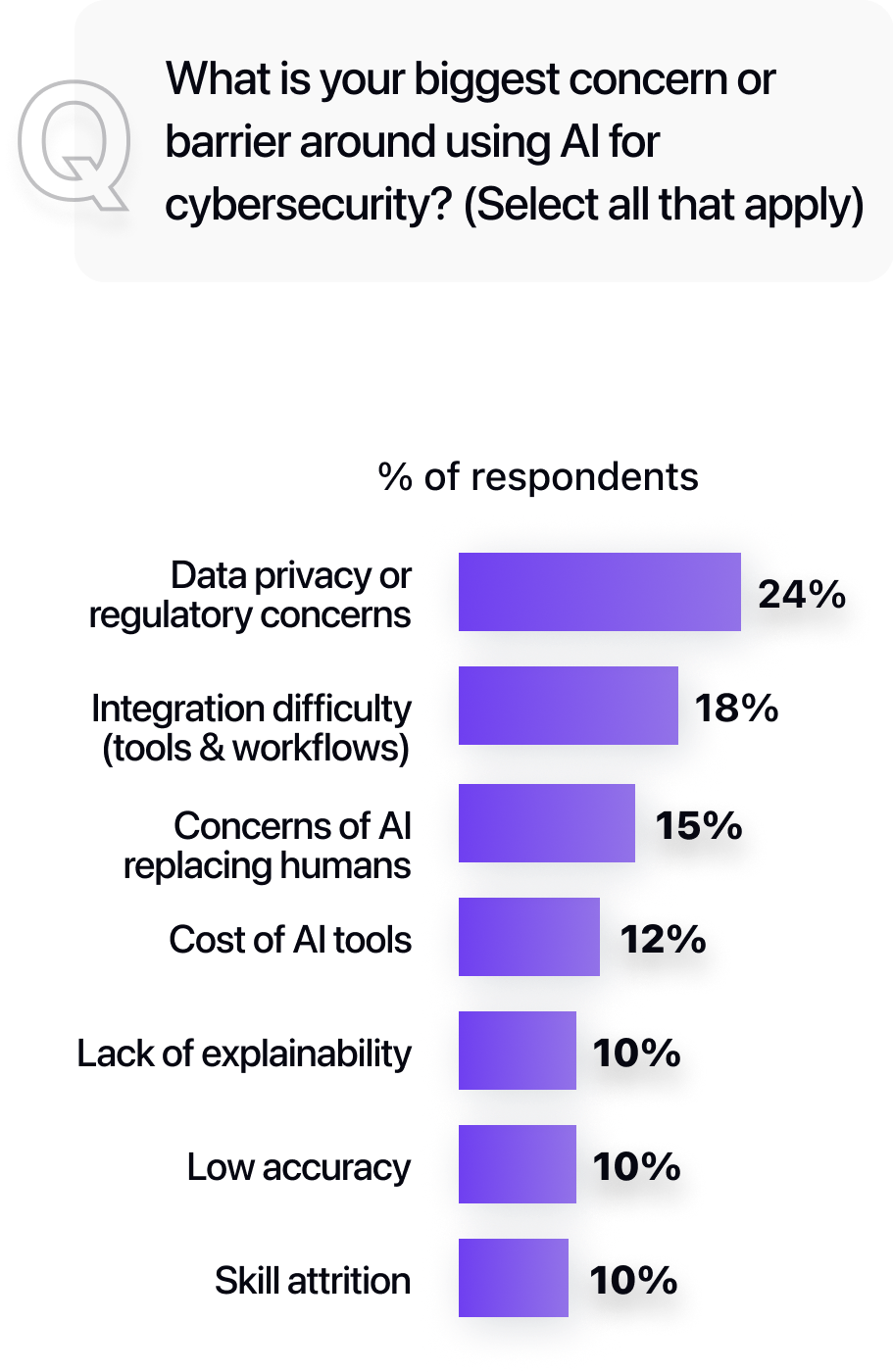
-min.webp)
We recently surveyed nearly 300 CISOs, SOC leaders, and SecOps practitioners about their most pressing challenges, their use of AI to address these issues, and the gaps and roadblocks they face. You can download the full report here.
Below are key insights from our findings:
Large enterprises (20,000+ employees) deploy an average of 28 alert-generating security tools, resulting in a staggering 3,181 alerts per day. Across all organizations, analysts face an average of 960 alerts each day.

The overwhelming volume of alerts creates a critical vulnerability: the alarm sounds, but often no one can respond. Approximately 40% of alerts are ignored or left uninvestigated due to resource constraints. This alert fatigue raises the risk that analysts may overlook legitimate and potentially catastrophic threats.
{{ebook-cta}}
Alert dwell time—the interval between an alert firing and initial triage—averages about 56 minutes. Each minute an alert remains unaddressed heightens the risk of a breach, data loss, or compromise. For context, CrowdStrike’s 2025 Global Threat Report found phishing attacks extract sensitive information within an average of 48 minutes—and as fast as 51 seconds in extreme cases.

Adopting AI-driven SOCs is no longer theoretical; it's rapidly becoming a reality. While Data Security (53%) and Cloud Security (37%) continue to be primary security priorities, AI for Security now ranks among the top three, with approximately 33% of leaders recognizing its critical role in modern cybersecurity.

Despite common media narratives highlighting AI accuracy issues or concerns over job displacement, the leading obstacle to AI adoption in cybersecurity is actually data privacy and regulatory compliance, cited by 24% of respondents. Integration complexity ranked second. Organizations familiar with SOAR deployments already understand how crucial seamless integrations and swift deployments are to successful SOC automation.
Concerns about AI accuracy (10%) and fears of AI replacing humans (15%) ranked relatively low, suggesting security leaders increasingly trust AI capabilities.

Despite current barriers, cybersecurity leaders overwhelmingly believe AI will become foundational to SOC operations. This conviction underscores AI as a strategic necessity, driving continued investment and innovation to overcome existing hurdles. Within three years, respondents anticipate AI will manage approximately 60% of SOC workloads, reflecting confidence in AI’s critical role in enhancing security effectiveness and scalability.
Download the full report for additional insights and statistics, including:
Download the full report for insights on AI adoption, alert investigation times, top use cases, ROI measurement, and more
.png)
